Vietnam, being famous for its rich culture, stunning landscapes, and affordable cost of living are the haven for travelers and adventurers. Among diverse natural attractions, the rice fields of Vietnam are currently preferred due to their Vietnamese cultural presence and serene beauty. In this article, Frontier Travel Viet Nam recommends the best places to see rice fields in Vietnam, good timing to visit, and how to make the best of your Vietnam rice field travel journeys.
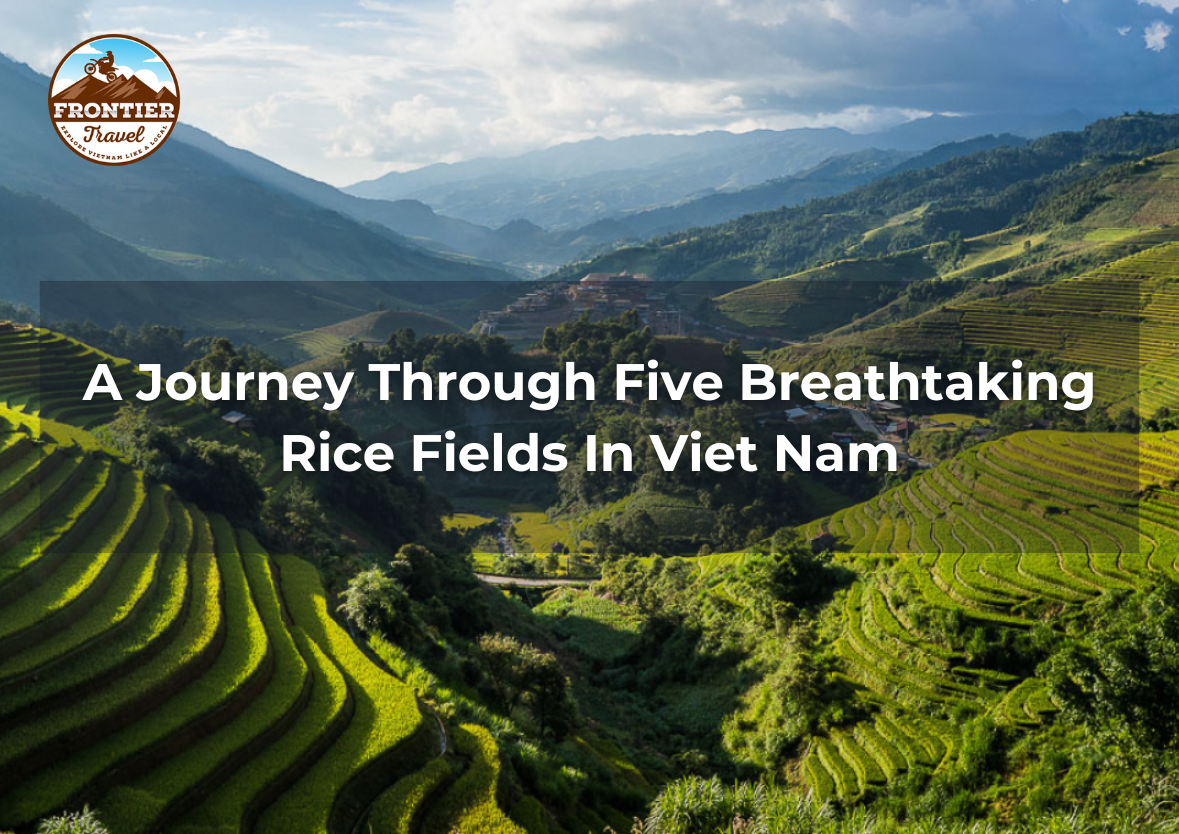
1. The overview of Vietnam Rice Fields
Vietnam rice fields are covered by lush green terraces, cascading down mountainsides and stretching across valleys. Rice planting and production are integral parts of Vietnamese agriculture, providing sustenance for the population and accounting for a large portion of the economic growth.
Endless green fields on a backdrop of dramatic landscapes are visually charming, and offer a window into the traditional rural life of Vietnam. Anyone can be drawn to these picturesque views to immerse in the harmony between primitive nature and modern human cultivation.

2. Best Places to See Rice Fields in Vietnam
Rice fields can be seen anywhere in Vietnam, as the country mostly relies on agricultural production. However, not all areas provide rice field visiting experience. Therefore, the Frontier Travel Viet Nam team recommends some reputable locations with rice field traveling.
Sapa Rice Fields
Sapa, located in the Northern region of Vietnam, is famous for its terraced rice fields, well-preserved cultural lifestyle, and diverse ethnic minority. These fields are meticulously carved into the mountains by local ethnic minority groups. Visitors can explore villages like Cat Cat, Ta Van, and Lao Chai, where the best viewpoints offer panoramic vistas of the terraced fields. The traditional farming methods and vibrant local culture bring a unique travel experience to visitors.
The weather is characterized by four seasons according to the Northern region. Summer is warm and humid. Winter is dry and cold, sometimes we can witness snowfall. Autumn and spring are mild, covered with colorful foliage across the town, making a perfect timing for hiking, trekking, and sightseeing.
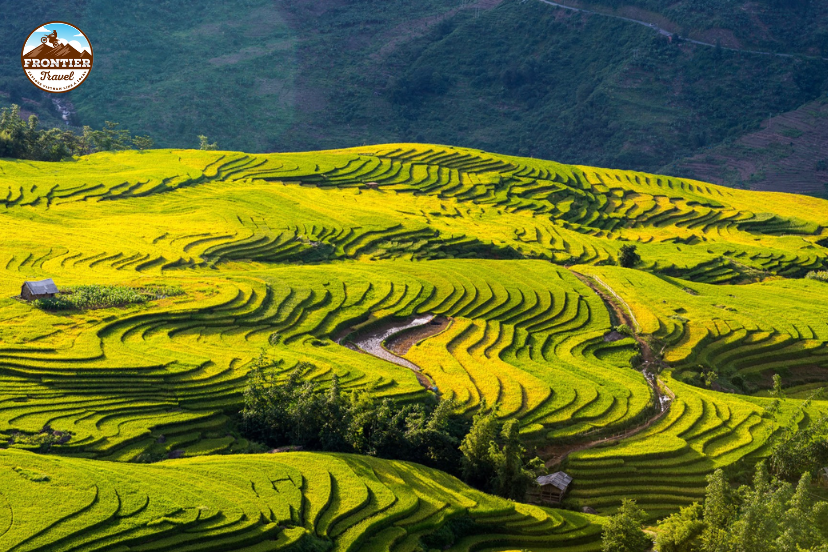
Mu Cang Chai Rice Fields
Mu Cang Chai, another northern gem, with a unique landscape of terraced rice fields, has been recognized by UNESCO for their cultural heritage. The annual Mu Cang Chai Rice Terrace Festival during the harvest season simulates the local customs and traditions, preserving the ancient uniqueness of the area. The stunning of Mu Cang Chai can be considered “too good to be true”, with fields that look like they merge seamlessly with the sky.
During the summer, the terraces are covered with vibrant, green, ripening rice stems. By early autumn, the rice plants turn into a golden yellow, giving the signal of the harvest. During the winter, the terraces are filled with water, creating melancholy cascading rows. Then spring comes, when the farmers plant a new crop, the terraces transform into anthills of activity.
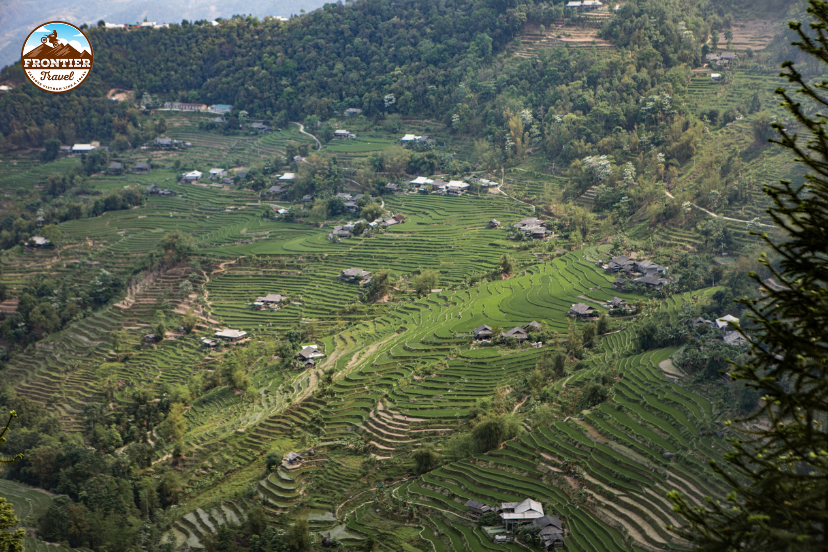
Ninh Binh Rice Fields
Ninh Binh is the home of the stunning Tam Coc region. Here, rice paddies are interspersed with limestone karsts, creating a dramatic and surreal landscape. Visitors can take boat tours through the paddies, gliding along the Ngo Dong River, and enjoy the scenic beauty of the water.
Between May and June, during the planting seasons, traveling to Ninh Binh allows you to observe the meticulous farming practices by local farmers. Alternatively, during the harvest season from September to October, you can witness the wonderful transformation of the green landscape into a golden paradise. Ninh Binh rice fields exude a sense of tranquility and beauty, creating picturesque views of the harmonious coexistence between humans and nature.
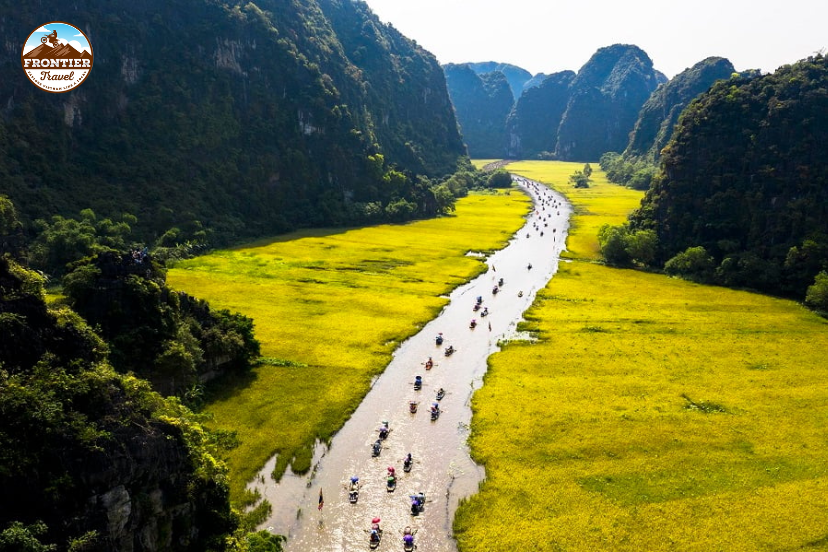
Ha Giang Rice Fields
Ha Giang, located in the northern highlands, very close to the Chinese border, has rugged and pristine landscapes. The rice terraces in Hoang Su Phi, a district of Ha Giang, are particularly breathtaking. Hoang Su Phi is somehow similar to Mu Cang Chai, but with fewer tourists. Therefore, the destination is a great advantage for maintaining the authenticity of the beautiful and unspoiled area. The area's dramatic terrain and vibrant cultural traditions make it a must-visit for adventurous travelers.
Ha Giang normally has nice weather, with the climate being cooler and more refreshing compared to the bustling city. There are four distinct seasons. During spring, it gets a bit warmer and there might be showers occasionally. Summer is a bit hot and humid with some rain, but this is the time that rice terraces start turning lush and green, creating a charming landscape. Autumn brings clear skies and less humidity, when terraced fields turn into a golden yellow. Winter is dry, cold, and sunny, sometimes it could be chilly with occasional mist.
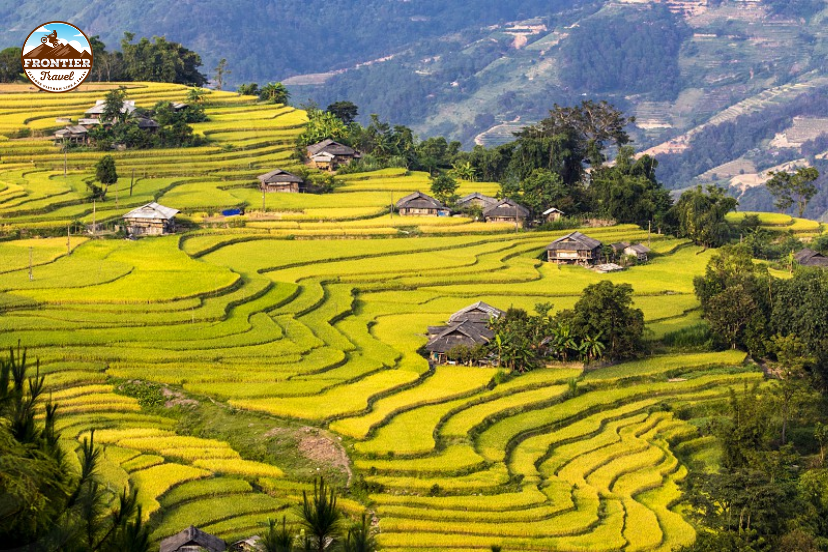
Mekong Delta Rice Fields
The Mekong Delta in Southern Vietnam is well-known for its vast, flat rice paddies. The region is influenced by the Mekong River, which provides the necessary water sources for rice cultivation. Been built up over the years, the delta gets formed in the triangle shape and extremely rich alluvium, where farmers live to pursue their vocation of farming. Floating markets and traditional farming practices add to the allure of this region, making it a unique destination for travelers.
Enjoying a tropical climate, the Mekong Delta is characterized by two distinct dry and rainy seasons. Dry season lasts from December to April, the weather is relatively cooler and drier compared to the rainy season, which is more ideal for outdoor activities and city adventures. Rainy season lasts from May to November, with frequent rainfall and higher humidity.
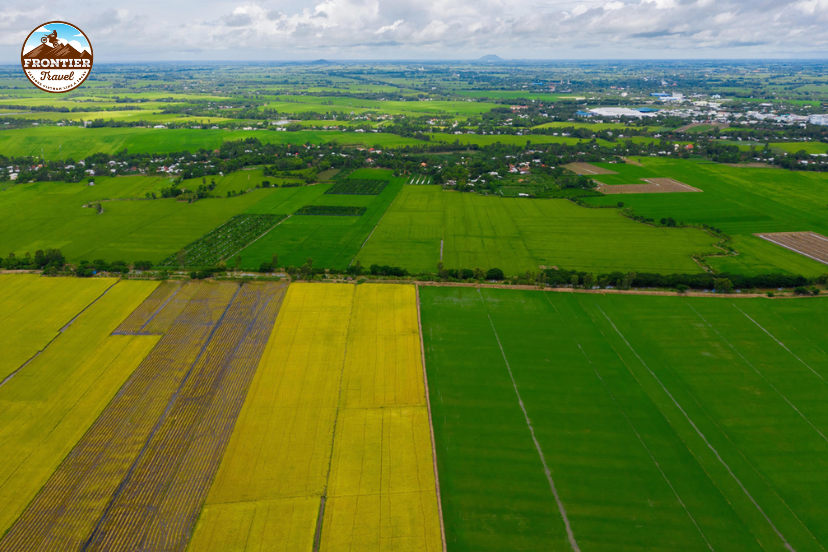
3. Best Time to See Rice Fields in Vietnam
To help you avoid disappointment when visiting rice fields in Viet Nam, the Frontier Travel Viet Nam team with our tour guide experience suggests some good timing, so you can take note and arrange your schedule.
When to Visit Northern Vietnam Rice Fields (Sapa, Mu Cang Chai, Ha Giang)
- Planting Season (April - May): The farmers are preparing and working on fields, offering a unique look at the local agricultural process and method.
- Green Season (June - July): The rice fields become lush and green. You can enjoy stunning views and take excellent photographs.
- Harvest Season (September - October): The fields turn from green to bewitching golden as the rice ripens, creating a picturesque landscape of a rich agricultural culture.
To make your best sightseeing experience, we suggest you use a motorbike to Sapa, Mu Cang Chai and Ha Giang.
When to Visit Central Vietnam Rice Fields (Ninh Binh)
The best times to visit Ninh Binh rice fields are from May to June and/or September to October. During those timings, the fields are vibrant and lush, and the weather is generally favorable for outdoor activities.
When to Visit Southern Vietnam Rice Fields (Mekong Delta)
Rice fields in the Mekong Delta are under cultivation year round, but the rainy season from May to October offers the most lush and green views, along with local farming observation. However, the weather at this time is humid and rainy; therefore, it is not ideal for many outdoor activities.

4. Vietnam Rice Field Tours
You can opt for guided tours or self-guided tours based on your demands and familiarity with Vietnamese traveling. Each one offers a different experience and pricing.
Guided Rice Field Tours
For the most convenient experience, taking a guided tour with expertise in local knowledge, cultural insights, and safety is a great choice. Popular tour operators, such as Frontier Vietnam, offer packages that cover the visit to the best rice field destinations. The tour guides will support you from scratch to end, ensuring a seamless journey.
Self-Guided Rice Field Tours
For those who prefer to travel independently, or those who are familiar with Vietnamese traveling, planning a self-guided tour is also an option. You must check if your means of transport is reliable when renting a motorbike or hiring a car. Include essential stops on your itinerary and consider staying in local homestays to fully immerse yourself in the authentic local culture.
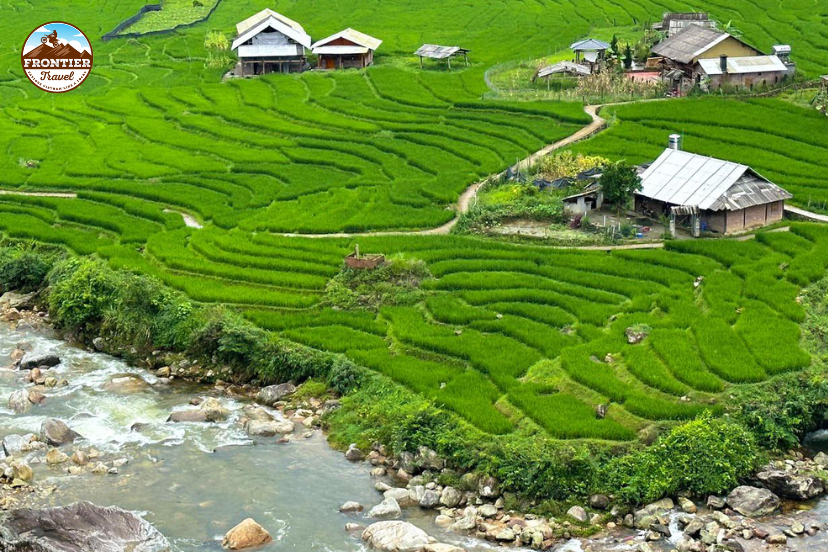
5. Practical Tips for Visiting Vietnam Rice Fields
To make the best of your rice field journeys, here the Frontier Travel Viet Nam team provides some small but helpful tips regarding transportation, accommodation, cultural etiquette and photoshooting.
Vietnam Rice Field Travel Tips
- Transportation: The best way to get to different rice fields varies depending on your current location. For Sapa and Mu Cang Chai, taking a train or bus from Hanoi should be considered. For Ninh Binh, a short train or bus ride from Hanoi works well. Ha Giang is best accessed by bus or motorbike from Hanoi for the most scenic experience. The Mekong Delta can be reached by bus or boat from Ho Chi Minh City.
- Accommodation: There are many options for you, ranging from homestays in local villages to hotels in nearby towns. Remember to book in advance, especially during peak seasons, is recommended.
Cultural Etiquette of Vietnam Rice Field Areas
- Respect local customs: When visiting villages, we recommend you dress modestly and ask for permission if you want to take photos of people.
- Interaction guidelines: You should always be polite and respectful when interacting with locals. And you can try learning a few basic Vietnamese phrases, like “Xin chào” (Hello) and “Cảm ơn” (Thank you), to gain appreciation from surrounding people.
Photography Tips When Visiting Vietnam Rice Field Destinations
- Best times for photography: Early morning and late afternoon provide the best lighting conditions for photoshoots. You should arrange time to capture the golden hour during sunrise and sunset enhancing the beauty of the landscapes.
- Equipment recommendations: A wide-angle lens is ideal for capturing the vastness of the whole rice field. If you travel alone, do not forget to prepare a tripod.
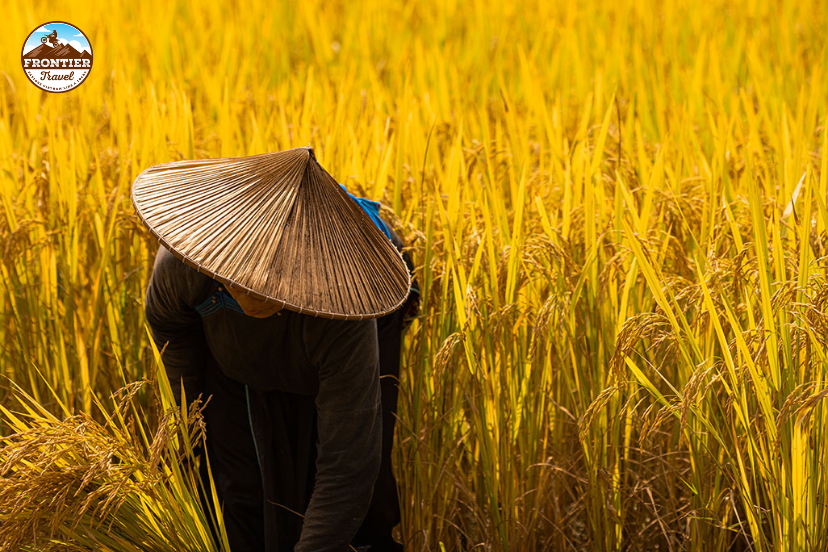
Rice fields in Vietnam offer you a breathtaking sightseeing experience, along with a local atmosphere, culture, and lifestyle that should be on all travelers’s bucket lists. If you have any questions or concerns regarding the upcoming journey to Vietnam rice fields, please feel free to contact Frontier Travel Vietnam to get support for travel tips, booking accommodations, and renting transportation.





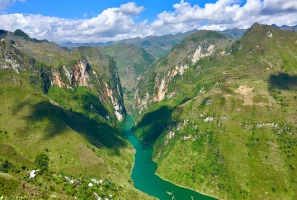
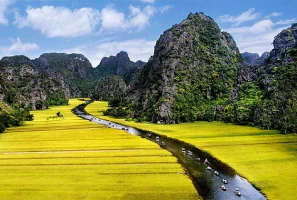
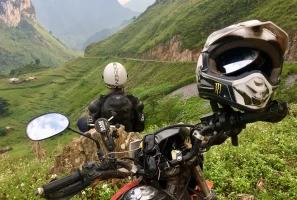
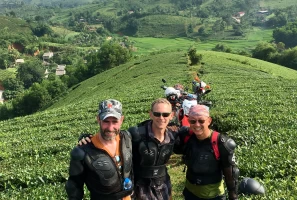
.png)